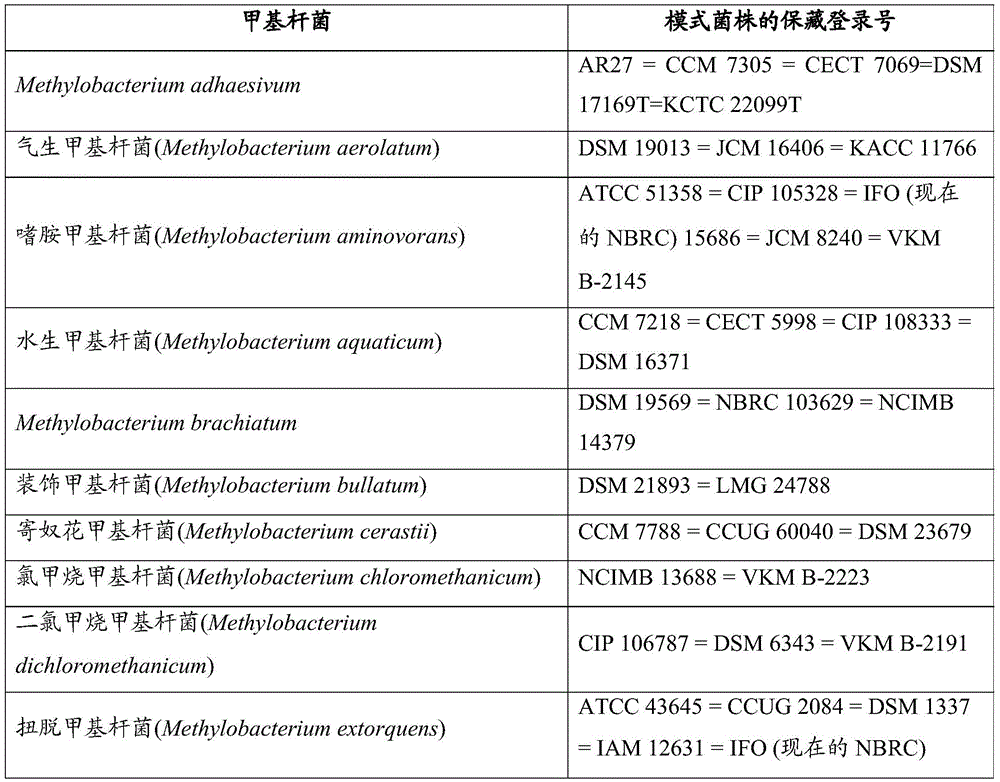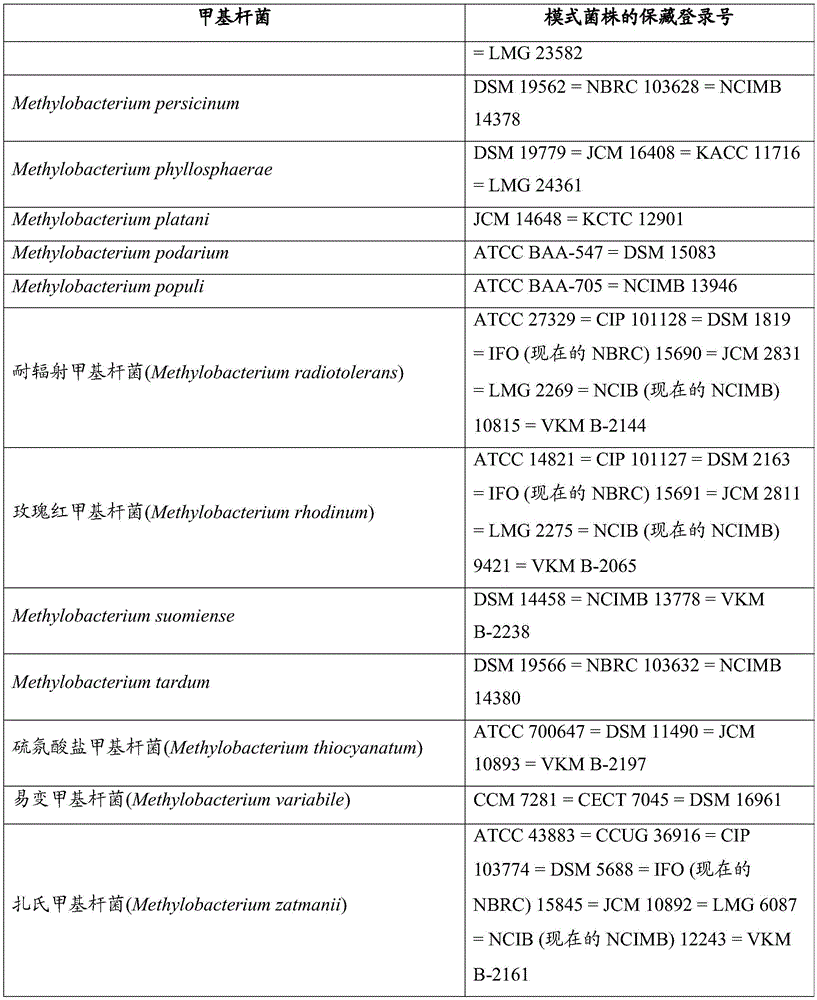Bacterial fermentation methods and compositions
A technology for compositions and fermented products, applied in the directions of bacteria, botanical equipment and methods, and methods of using microorganisms, etc., can solve problems such as equipment cannot be constructed, and achieve the effect of shortening production time
- Summary
- Abstract
- Description
- Claims
- Application Information
AI Technical Summary
Problems solved by technology
Method used
Image
Examples
Embodiment 1
[0092] Example 1. Growth of PPFM bacteria on solid agar plates
[0093] Various standard media were tested for the growth of PPFM bacteria on solid agar plate media.
[0094] One medium used was Ammonium Mineral Salts (AMS) medium (Whittenbury et al. 1970). Each liter of AMS medium contains 700 mg of dipotassium hydrogen phosphate anhydrous, 540 mg of potassium dihydrogen phosphate, 1 g of magnesium sulfate heptahydrate, 500 mg of anhydrous ammonium chloride, 200 mg of calcium chloride dihydrate, 4 mg of sulfuric acid heptahydrate Iron, 100 mcg zinc sulfate heptahydrate, 30 mcg manganese chloride tetrahydrate, 300 mcg anhydrous boric acid, 200 mcg cobalt chloride hexahydrate, 10 mcg copper chloride dihydrate, 20 mcg nickel chloride hexahydrate, and 60 mcg dihydrate Sodium molybdate hydrate.
[0095] AMS medium was prepared from the four stock solutions listed below
[0096] Stock solution I: For 1 L at 50x concentration
[0097] Dipotassium Phosphate, Anhydrous 35g
[009...
Embodiment 2
[0122] Example 2. Growth of PPFM bacteria in clarified single-phase liquid medium
[0123] For those four solid agar plate media found in Example 1 that supported the fastest and most abundant growth of the PPFM bacterium M. extrusive, the corresponding liquid forms (ie, no agar added) were prepared and tested. The four liquid media prepared as described in Example 1 (with the only exception that they did not contain any agar) were water-clear liquids with all components in solution.
[0124] To a flask containing 100 ml of these four liquid media, add an inoculum of the PPFM bacteria Methylobacter extorts to yield approximately 1 x 10 5 Initial titer of colony forming units (CFU) / ml. The flasks were placed in a rotary shaker incubator setup and grown at 30°C at 250 rpm for 5 days. At the end of the 5-day incubation, the titers of PPFM bacteria in the flasks were determined. The result is:
[0125]
[0126]
[0127] The surprising aspect of these results is that in t...
Embodiment 3
[0128] Example 3. Growth of PPFM bacteria in biphasic medium containing insoluble salt crystals
[0129] To prepare the biphasic medium, the liquid AMS+glycerol and peptone medium was turbid (ie provided with solid matter) by the intentional formation of insoluble crystals of magnesium phosphate and / or calcium phosphate. In order to intentionally form insoluble crystals in the medium, the preparation method described in Example 1 was modified as follows. All components except the trace metal stock solution were mixed together prior to autoclaving. That is, to 940 ml of distilled water were added 20 ml of each of stock solutions I, II and III and 10 grams of glycerol and 10 grams of peptone. After autoclaving, the medium was completed by adding 1 ml of filter sterilized trace metal stock solution. Autoclaving the components of stock solutions I, II and III that were mixed together prior to autoclaving resulted in the formation of insoluble salt crystals presumably primarily m...
PUM
 Login to View More
Login to View More Abstract
Description
Claims
Application Information
 Login to View More
Login to View More - R&D
- Intellectual Property
- Life Sciences
- Materials
- Tech Scout
- Unparalleled Data Quality
- Higher Quality Content
- 60% Fewer Hallucinations
Browse by: Latest US Patents, China's latest patents, Technical Efficacy Thesaurus, Application Domain, Technology Topic, Popular Technical Reports.
© 2025 PatSnap. All rights reserved.Legal|Privacy policy|Modern Slavery Act Transparency Statement|Sitemap|About US| Contact US: help@patsnap.com



